- The Importance of Pollination
- What is Pollination?
- The Role of Bumblebees in Pollination
- The Importance of Pollination for Self-Pollinating Tomato Varieties
- Self-Pollination vs. Cross-Pollination
- Self-Pollination
- Cross-Pollination
- The Role of Bumblebees
- The Role of Bumblebees
- Bumblebees as Pollinators
- Why Bumblebees Are Important for Self-Pollinating Tomato Varieties
- 1. Increased Pollination Efficiency
- 2. Cross-Pollination
- 3. Increased Fruit Quality
- 4. Pollination Management
- How Bumblebees Pollinate Tomato Plants
- Bumblebee Foraging Behavior
- Effective Pollination
- Benefits of Bumblebee Pollination
- Conclusion
- The Process of Bumblebee Pollination
- Bumblebee Behavior and Tomato Pollination
- The Importance of Bumblebee Pollination for Self-Pollinating Tomato Varieties
- The Benefits of Bumblebee Pollination for Tomato Plants
- Factors Affecting Bumblebee Pollination
- “Question-Answer”
- What is the role of bumblebees in pollination of self-pollinating tomato varieties?
- How do bumblebees enhance the rate of pollination in self-pollinating tomato varieties?
- Why are bumblebees important for improving fruit quality in self-pollinating tomato varieties?
- Can self-pollinating tomato varieties produce fruits without bumblebees?
- Are there any other insects that can help with the pollination of self-pollinating tomato varieties?
- “Video” How to Hand-Pollinate TOMATO Flowers for Better Yields
Tomatoes are one of the most popular and widely consumed fruits worldwide. While they are technically classified as fruits, they are often considered and used as vegetables due to their savory flavor and culinary versatility. In the plant world, tomatoes are classified as self-pollinating crops, which means they can produce fruit without outside help. However, recent research has shown that the presence of bumblebees can significantly enhance the quality and quantity of tomato fruit.
Bumblebees, with their fuzzy bodies and large size, are excellent pollinators. They are known for their ability to buzz-pollinate, which involves vibrating their bodies to release pollen from the anthers of flowers. This behavior is particularly important for tomatoes, as their pollen is not easily accessible and requires specific movements to be released. Bumblebees are perfectly suited for this task, and their presence in tomato fields can greatly increase the chances of successful pollination.
When bumblebees visit tomato flowers, they not only transfer pollen from the male reproductive organs to the female reproductive organs but also improve the quality of the fruit. Studies have shown that bumblebee-pollinated tomatoes are more uniform in size, have fewer deformities, and exhibit higher sugar content than self-pollinated tomatoes. This is due to the more efficient transfer of pollen and the increased genetic diversity resulting from cross-pollination.
In conclusion, while tomatoes are capable of self-pollination, the role of bumblebees in their pollination process cannot be underestimated. Bumblebees are essential for enhancing the quality and quantity of tomato fruit, improving uniformity, reducing deformities, and increasing sugar content. Understanding the importance of bumblebees in tomato pollination can help growers and researchers develop better strategies to ensure successful pollination and maximize tomato yield.
The Importance of Pollination
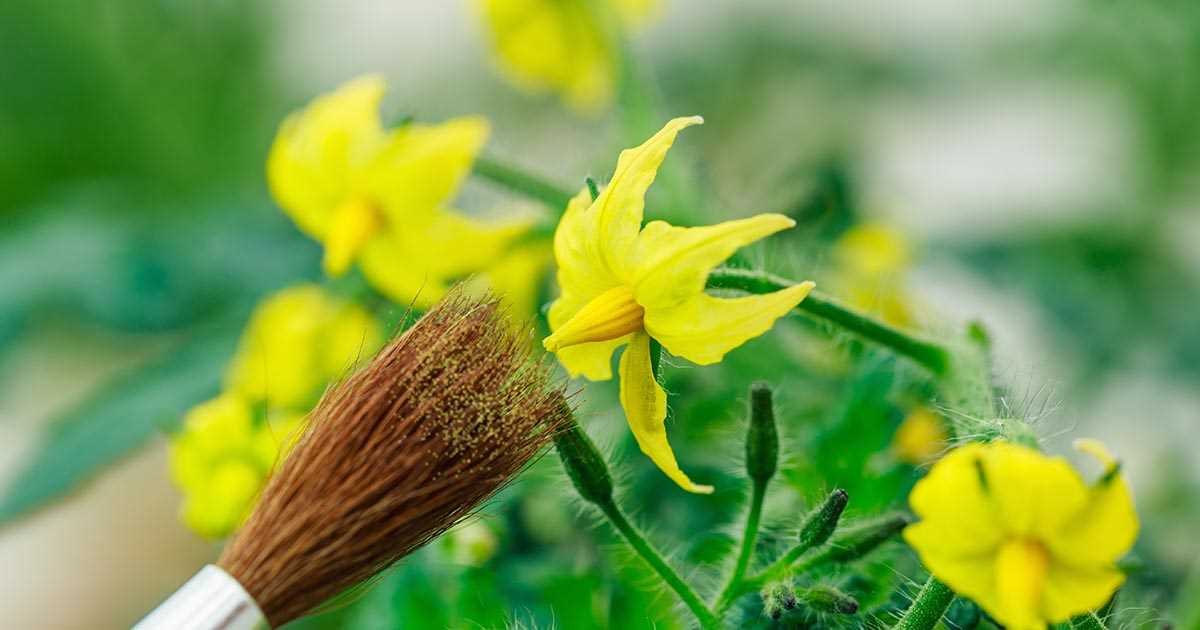
Pollination is a crucial process in the reproductive cycle of flowering plants. It involves the transfer of pollen from the male reproductive organ (anther) to the female reproductive organ (stigma) of a flower, leading to fertilization and the production of seeds.
Pollination plays a vital role in the survival and proliferation of plant species, and it is particularly important for the production of fruits and vegetables that we rely on for food. Bumblebees are one of the key pollinators in nature and have a significant impact on the pollination of self-pollinating tomato varieties.
Bumblebees are known for their ability to “buzz pollinate” by vibrating their wing muscles to dislodge pollen from the anthers of flowers. This behavior increases the efficiency of pollination, as it helps to ensure that pollen is effectively transferred to the stigma of the same or another flower.
Without proper pollination, self-pollinating tomato varieties may experience reduced fruit set and poor seed development. Bumblebees play a crucial role in increasing the chances of successful pollination and maximizing the yield of self-pollinating tomato plants.
In addition to directly benefiting the tomato plants, bumblebees also contribute to the overall health and biodiversity of ecosystems. They visit multiple flowers in search of nectar and pollen, promoting cross-pollination and genetic diversity among different plant species.
Therefore, understanding the role of bumblebees in the pollination of self-pollinating tomato varieties is essential for sustainable agriculture and the conservation of natural habitats. By studying their behaviors and interactions with tomato plants, we can gain valuable insights into how to enhance pollination and improve crop yields.
| Benefit | Description |
|---|---|
| Increased Fruit Set | Bumblebees help transfer pollen, leading to a higher rate of fruit formation in self-pollinating tomato varieties. |
| Improved Seed Development | Proper pollination by bumblebees results in the development of healthy and viable seeds in self-pollinating tomato plants. |
| Promotion of Genetic Diversity | Bumblebees facilitate cross-pollination and gene flow, contributing to the genetic diversity of plant populations. |
| Ecosystem Health | By visiting numerous flowers, bumblebees support the overall health and biodiversity of ecosystems. |
What is Pollination?
Pollination is a crucial process in the reproductive cycle of flowering plants. It involves the transfer of pollen from the male part of a flower (stamen) to the female part (pistil) of the same or a different flower. This transfer of pollen can occur through various mechanisms, including wind, water, animals, and insects.
The Role of Bumblebees in Pollination
Bumblebees are one of the most effective and efficient pollinators of flowering plants, including many food crops such as tomatoes. They have several unique characteristics that make them excellent pollinators:
- Large Body Size: Bumblebees have a larger body size compared to other bees, allowing them to carry more pollen.
- Long Tongue: Bumblebees have a long tongue that can reach deep into flowers, ensuring effective pollen transfer.
- Flower Constant: Bumblebees are “flower constant,” meaning they prefer to forage on one type of flower at a time. This behavior increases the chances of cross-pollination.
- Vibration Technique: Bumblebees can use a technique called “buzz pollination” where they vibrate their flight muscles to dislodge stubborn pollen from flowers that require this type of pollination.
The Importance of Pollination for Self-Pollinating Tomato Varieties
Self-pollinating tomato varieties have the ability to produce fruit without external pollination. However, even though tomatoes are capable of self-pollination, their yields can still benefit from the presence of pollinators like bumblebees. This is because bumblebees can enhance the efficiency of fertilization and increase fruit set, ultimately leading to higher yields.
When bumblebees visit tomato flowers, they transfer pollen between flowers, increasing the chances of cross-pollination and the production of genetically diverse and healthier fruits. Their buzzing vibrations also help in releasing pollen from the anthers, ensuring efficient fertilization.
| Bumblebee Pollination Benefits | |
|---|---|
| Increased fruit set | Higher yields |
| Better fruit quality | Improved genetic diversity |
| More uniform fruit size | Enhanced resistance to diseases and pests |
In conclusion, pollination is essential for the successful reproduction and yield of self-pollinating tomato varieties. Bumblebees play a critical role in enhancing the efficiency of pollination, increasing fruit set, and improving the overall quality of tomatoes.
Self-Pollination vs. Cross-Pollination
Self-pollination and cross-pollination are two different methods by which plants can achieve pollination and reproduce. Understanding the differences between these two processes is crucial for understanding the role of bumblebees in the pollination of self-pollinating tomato varieties.
Self-Pollination
Self-pollination occurs when pollen from the anther of a flower is transferred to the stigma of the same flower or to the stigma of another flower on the same plant. In this process, the pollen comes from the same plant, ensuring genetic similarity and maintaining the characteristics of that plant. Tomatoes are self-pollinating plants, which means they have the ability to pollinate themselves without the need for external pollinators.
Self-pollination in tomato plants generally occurs through a process called autogamy, where the anthers release pollen onto the stigma within the same flower. The structure of the tomato flower promotes self-pollination as the anthers are positioned close to the stigma, making it easier for the pollen to reach the stigma.
Cross-Pollination
Cross-pollination, on the other hand, occurs when pollen from the anther of one flower is transferred to the stigma of another flower on a different plant. This can be achieved through various agents, including wind, water, insects, and animals like bumblebees. Cross-pollination introduces genetic diversity by combining the characteristics of different plants and increasing the genetic variability of the offspring.
While tomato plants are primarily self-pollinating, they can also undergo cross-pollination under certain conditions. For example, if there are multiple tomato plants growing in close proximity, bumblebees may visit the flowers of one plant and inadvertently transfer pollen from one plant to another, leading to cross-pollination.
The Role of Bumblebees
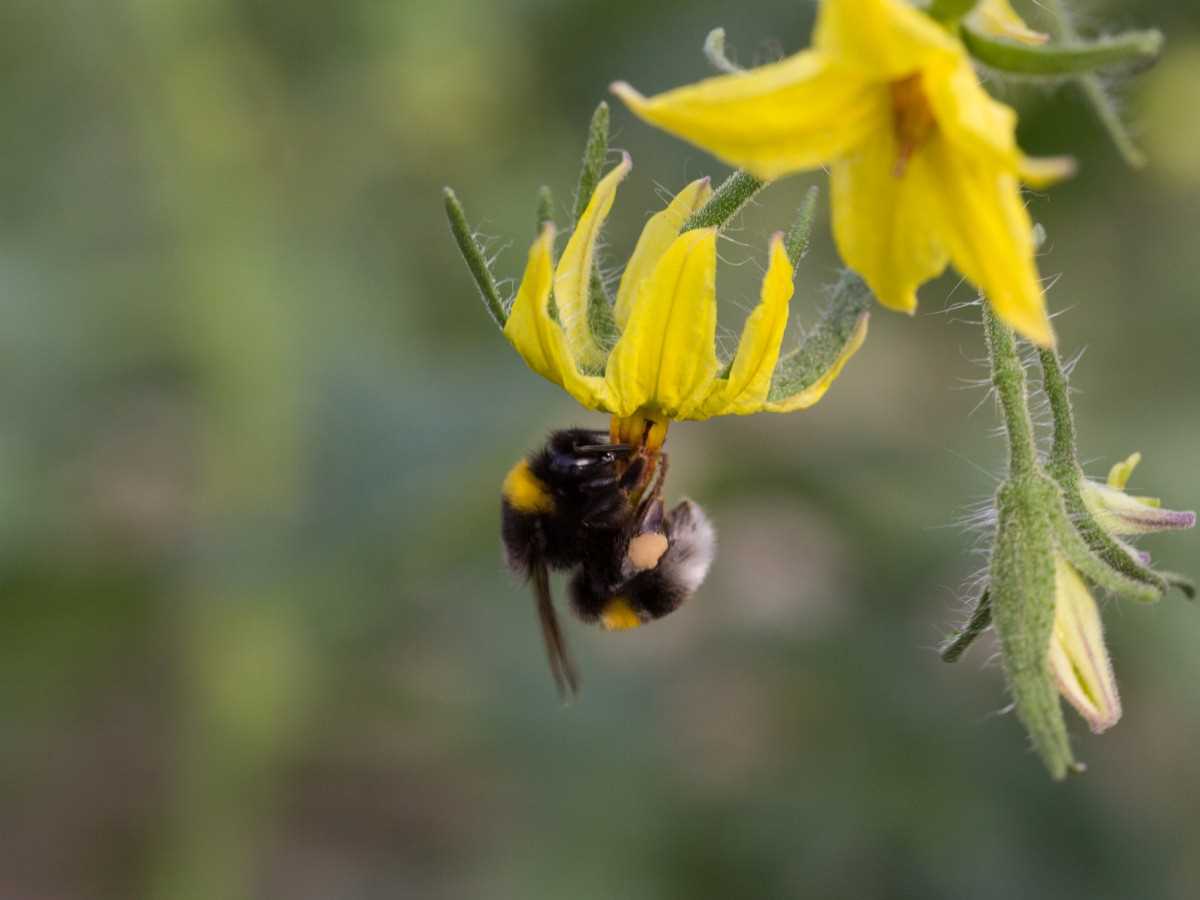
Bumblebees play a critical role in facilitating cross-pollination in tomato plants. As they move from flower to flower in search of nectar and pollen, they inadvertently transfer pollen from the anthers to the stigmas, promoting cross-pollination between different plants. Bumblebees are particularly effective pollinators for tomato plants due to their large size and unique vibrating flight patterns, which help dislodge pollen from the anthers and carry it to the stigmas.
Without the presence of bumblebees or other pollinators, tomato plants are still capable of self-pollinating, but the rate of cross-pollination decreases significantly. Cross-pollination can be beneficial for tomato plants as it increases genetic diversity, leading to stronger and more resilient offspring.
In conclusion, while self-pollination is the primary method of reproduction in self-pollinating tomato varieties, cross-pollination plays a vital role in increasing genetic diversity. Bumblebees contribute to this process by facilitating cross-pollination through their pollination activities.
The Role of Bumblebees
Bumblebees play a crucial role in the pollination of self-pollinating tomato varieties. They are excellent pollinators due to their unique characteristics, such as their large size and hairy bodies.
Pollination Process:
- Bumblebees visit tomato flowers in search of nectar and pollen.
- As they move from flower to flower, bumblebees inadvertently transfer pollen between the male and female parts of the flowers.
- This transfer of pollen allows for fertilization, resulting in the development of fruits.
Importance of Bumblebees:
Bumblebees are key pollinators for self-pollinating tomato varieties due to the following reasons:
- Efficient Pollination: Bumblebees have the ability to buzz pollinate, which involves vibrating their bodies at high frequencies. This vibration helps to release pollen from the anthers of tomato flowers, increasing pollination efficiency.
- Extended Flower Visitation: Bumblebees tend to spend longer amounts of time on each flower compared to other insect pollinators. This extended visitation increases the chances of pollen transfer between flowers.
- Wide Foraging Range: Bumblebees have the capacity to cover large distances while foraging for nectar and pollen. This extensive foraging range allows them to access a greater number of tomato plants, increasing overall pollination rates.
Impact on Tomato Yields:
| Studies have shown that: | Bumblebee pollination has a positive impact on tomato yields: |
|---|---|
| 1. | A higher number of bumblebee visits to tomato flowers results in a greater number of fruits produced per plant. |
| 2. | Bumblebee-pollinated tomato plants have larger fruit sizes compared to plants that rely solely on wind or self-pollination. |
| 3. | Bumblebee pollination increases the overall fruit set percentage in self-pollinating tomato varieties. |
In conclusion, bumblebees are vital for the pollination of self-pollinating tomato varieties, leading to increased fruit production and improved fruit quality.
Bumblebees as Pollinators
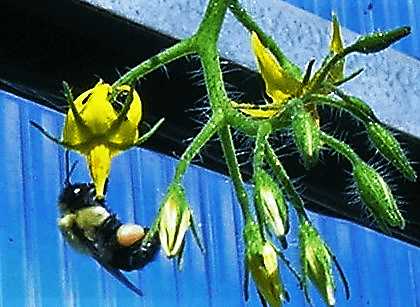
Bumblebees are important pollinators for many plant species, including tomatoes. They are known for their ability to buzz pollinate, a technique they use to release pollen from the anthers of flowers by vibrating their wing muscles at a specific frequency. This behavior is especially effective for self-pollinating tomato varieties that have tightly closed flower structures.
Bumblebees have a few features that make them excellent pollinators for tomatoes:
- Size and Strength: Bumblebees are larger and stronger compared to other common pollinators like honeybees. Their size allows them to carry more pollen on their bodies and their strength enables them to navigate the complex flower structures of tomato plants.
- Long Tongue: Bumblebees have a long tongue that can reach deep into the flower to access nectar. This is essential for tomatoes as their nectar is located at the base of the flower and requires a longer tongue to reach.
- Efficiency: Bumblebees are efficient pollinators, visiting multiple flowers in a single foraging trip and effectively transferring pollen from plant to plant. They also exhibit a behavior called flower constancy, where they prefer to visit the same type of flower, leading to more efficient pollination.
Research has shown that bumblebees play a significant role in the pollination of self-pollinating tomato varieties. In fact, studies have demonstrated that bumblebee pollination can significantly increase fruit set, improve fruit quality, and increase overall yield in tomato crops.
To attract bumblebees to your tomato plants, you can provide them with suitable habitats and food sources. Planting flowers that provide nectar and pollen, such as lavender, mint, and sunflowers, can attract bumblebees to your garden. Creating small shelters, such as bee boxes or hives, can also provide nesting sites for bumblebees.
| Bumblebee Pollination: | Benefits for Tomatoes: |
|---|---|
| Increased fruit set | Improved fruit quality |
| Increased yield | Enhanced overall plant health |
Overall, bumblebees play a vital role in the pollination of self-pollinating tomato varieties. Their size, strength, and buzzing behavior make them efficient pollinators that can improve fruit set, quality, and yield. By creating suitable habitats and food sources for bumblebees, gardeners can increase their chances of successful tomato pollination and enjoy a bountiful harvest.
Why Bumblebees Are Important for Self-Pollinating Tomato Varieties
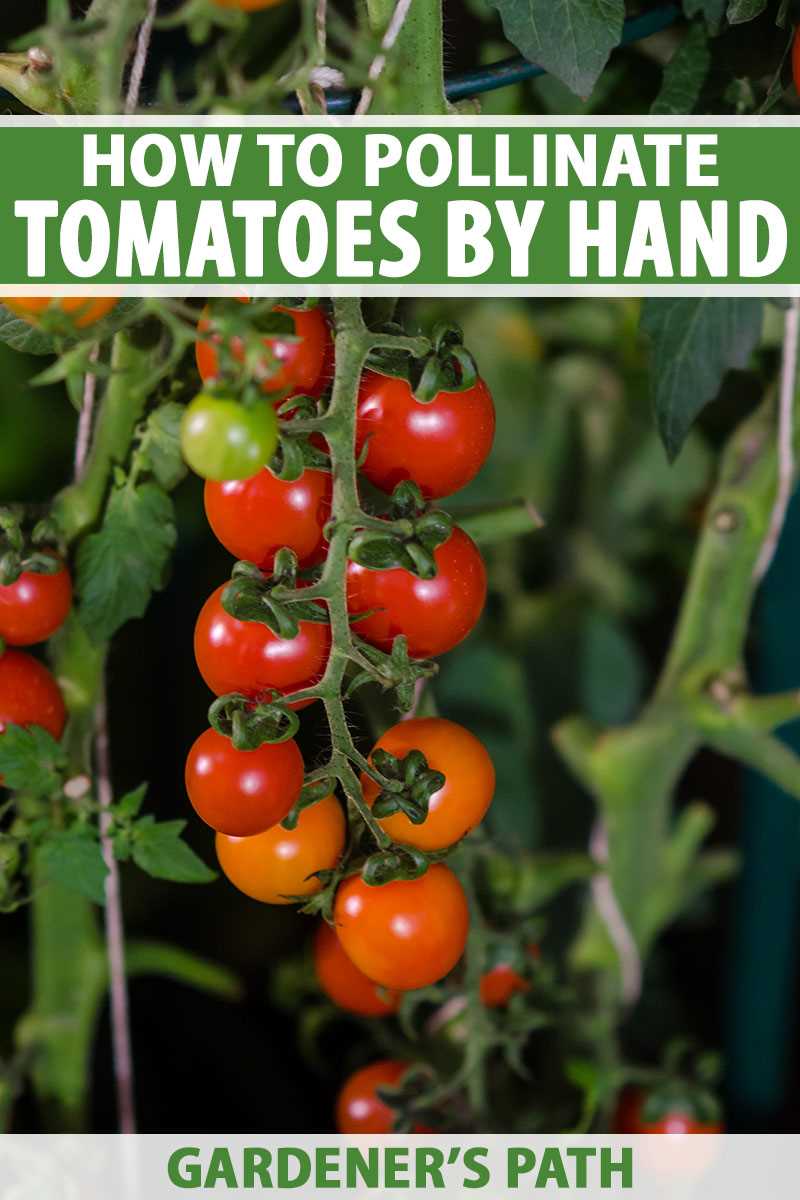
Although self-pollinating tomato varieties have the ability to produce fruits without external pollinators, such as bees, bumblebees still play a crucial role in their pollination process. Here are a few reasons why bumblebees are important for self-pollinating tomato varieties:
1. Increased Pollination Efficiency
Bumblebees are known for their buzz pollination technique, which involves vibrating their flight muscles at a certain frequency. This vibration helps to release pollen from the tomato flowers more effectively compared to other pollinators. The increased efficiency of bumblebees in transferring pollen leads to higher fruit set and better overall production.
2. Cross-Pollination
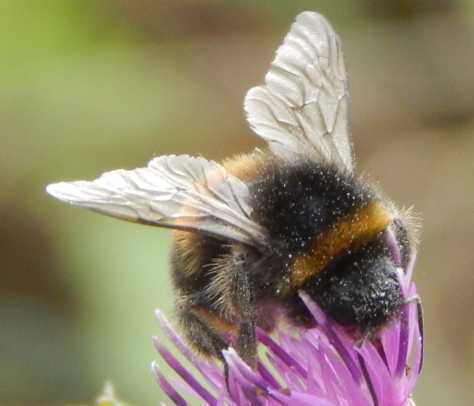
While self-pollination can occur in tomato plants without external pollinators, cross-pollination can still be beneficial. Bumblebees facilitate cross-pollination by transferring pollen from one tomato plant to another, allowing for the exchange of genetic material. This genetic diversity can lead to stronger and more resilient tomato plants with improved disease resistance.
3. Increased Fruit Quality
Studies have shown that bumblebee pollination can improve the quality of tomatoes, including attributes such as size, shape, color, and taste. Bumblebees are more thorough pollinators compared to wind or other insects, ensuring that each flower receives an adequate amount of pollen for fruit development. The result is a higher-quality harvest of tomatoes.
4. Pollination Management
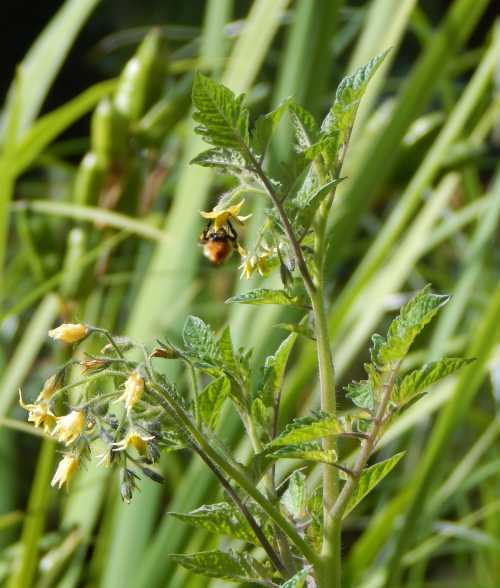
Bumblebees can also be used as a tool for pollination management in self-pollinating tomato varieties. By introducing bumblebee colonies to greenhouses or fields, growers can ensure consistent and efficient pollination, increasing the productivity and yield of their tomato crops.
In conclusion, although self-pollinating tomato varieties have the ability to reproduce without external pollinators, bumblebees play a vital role in optimizing their pollination process. Their buzz pollination technique, cross-pollination benefits, impact on fruit quality, and potential use in pollination management make bumblebees indispensable for self-pollinating tomato varieties.
How Bumblebees Pollinate Tomato Plants
Bumblebees play a crucial role in pollinating tomato plants, especially self-pollinating varieties. These bees are excellent pollinators due to their unique characteristics and behaviors.
Bumblebee Foraging Behavior
Bumblebees are known for their large size and robustness. They have the ability to forage over long distances and can carry heavy loads of pollen due to their strong flight muscles. This enables them to visit multiple tomato flowers in a single foraging trip.
When a bumblebee lands on a tomato flower, it uses its proboscis to access the nectar deep within the flower. As it feeds on the nectar, the bee’s body comes into contact with the flower’s reproductive structures, including the stigma and anthers.
Effective Pollination
Bumblebees are considered to be buzz pollinators, which means they use their flight muscles to generate vibrations that help release pollen from the anthers. This vibration causes the pollen to dislodge and become airborne, increasing the chances of successful pollination.
When the bumblebee moves on to another tomato flower, the loose pollen grains on its body are transferred to the stigma. The pollen grains then travel down the style and fertilize the ovules, leading to fruit development.
Benefits of Bumblebee Pollination
Unlike wind or self-pollination, bumblebee pollination ensures more efficient and consistent fertilization of tomato plants. This results in higher yields and better fruit quality.
Bumblebees are also capable of performing “buzz pollination” on tomato flowers, which can potentially improve the quality of the fruit. Buzz pollination involves the bee vibrating its flight muscles at a specific frequency, causing the flower to release more pollen. This can lead to larger, more uniform fruits with fewer deformities.
Conclusion
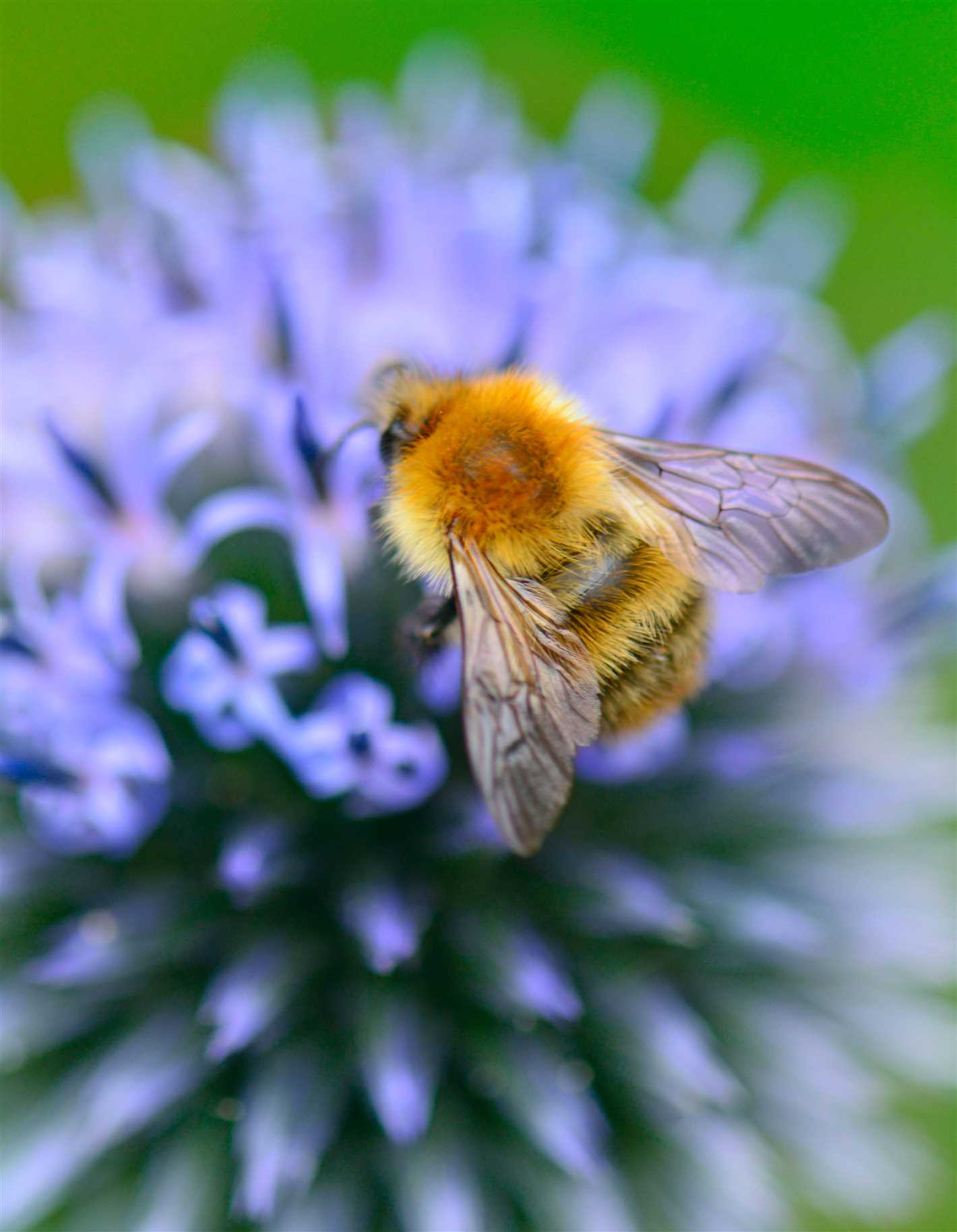
Bumblebees are vital to the pollination of self-pollinating tomato varieties. Their foraging behavior, effective pollination methods, and the benefits they bring to tomato plants make them essential partners in ensuring the successful reproduction and abundance of this important crop.
The Process of Bumblebee Pollination
Bumblebees play a crucial role in the pollination of self-pollinating tomato varieties. Their unique biological characteristics and behavior make them effective pollinators for these plants.
Bumblebee Behavior and Tomato Pollination
Bumblebees are known for their buzzing flight and distinctive appearance with a hairy body and yellow and black stripes. They have a unique way of pollinating tomato flowers.
When a bumblebee lands on a tomato flower, it uses its long tongue or proboscis to access the nectar deep within the flower. As it feeds on the nectar, the bumblebee’s body brushes against the flower’s reproductive parts, such as the stigma and anthers, which contain the male pollen.
This contact causes the pollen to stick to the bumblebee’s body due to the presence of tiny hairs. As the bumblebee moves from flower to flower, it inadvertently transfers the pollen from one plant to another, allowing for cross-pollination.
The Importance of Bumblebee Pollination for Self-Pollinating Tomato Varieties
While tomato plants are technically self-pollinating, they have a mechanism called buzz pollination that requires an external stimulus, such as the vibrations created by bumblebee flight, to release the pollen from the flower’s anthers.
Bumblebee pollination helps ensure a more efficient and effective pollination process for self-pollinating tomato varieties. The vibrations generated by the bumblebees’ buzzing flight trigger the release of the pollen, increasing the chances of successful fertilization and fruit set.
The Benefits of Bumblebee Pollination for Tomato Plants
Bumblebee pollination offers several benefits to tomato plants:
- Increased Fruit Production: Bumblebees’ efficient pollination helps maximize fruit production for tomato plants, leading to higher yields.
- Better Fruit Quality: Proper pollination by bumblebees ensures the development of well-formed, uniform, and healthy tomatoes.
- Genetic Diversity: Bumblebee pollination enables the mixing of genetic material between different tomato plants, promoting genetic diversity and potentially enhancing the overall resilience of the tomato population.
Overall, bumblebee pollination plays a crucial role in the reproduction and success of self-pollinating tomato varieties, contributing to the sustainability and productivity of tomato agriculture.
Factors Affecting Bumblebee Pollination
Bumblebees play a crucial role in the pollination of self-pollinating tomato varieties. However, several factors can affect the efficiency of bumblebee pollination, ultimately impacting tomato crop yield and quality. These factors include:
- Habitat destruction: Bumblebees require diverse habitats with a variety of flowering plants to sustain their populations. Habitat destruction, such as the conversion of natural areas into agricultural or urban landscapes, can limit the availability of suitable foraging resources for bumblebees and reduce their overall numbers.
- Climate change: Changes in temperature and precipitation patterns associated with climate change can disrupt the synchronization between flowering of tomato plants and bumblebee activity. This can lead to a mismatch in pollination timing, resulting in reduced fruit set and yield.
- Pesticide use: The widespread use of pesticides in agriculture can negatively impact bumblebee populations. Pesticides, especially insecticides, can directly kill bumblebees and other pollinators or impair their foraging and reproductive abilities. It is important to use integrated pest management practices that minimize the use of harmful pesticides and promote the conservation of bumblebees.
- Disease and parasites: Bumblebees are susceptible to various diseases and parasites, such as Nosema bombi and the Varroa mite. These pathogens can weaken bumblebee colonies and reduce their ability to effectively pollinate tomato plants. Regular monitoring and management of disease and parasite infestations are essential for maintaining healthy bumblebee populations.
- Competition with other pollinators: Bumblebees may compete with other pollinators, such as honeybees, for limited floral resources. Intensive honeybee populations in agricultural landscapes can outcompete bumblebees, reducing their access to nectar and pollen. Promoting diverse floral resources and implementing pollinator-friendly practices can help mitigate competition among pollinators.
Understanding and addressing these factors is vital for maintaining healthy bumblebee populations and ensuring optimal pollination of self-pollinating tomato varieties. By implementing habitat conservation measures, promoting pollinator-friendly practices, and using sustainable pest management strategies, we can enhance bumblebee pollination and support sustainable tomato production.
“Question-Answer”
What is the role of bumblebees in pollination of self-pollinating tomato varieties?
Bumblebees play a significant role in the pollination of self-pollinating tomato varieties. Although these varieties are capable of pollinating themselves, bumblebees enhance the process by increasing the rate of pollination and improving fruit quality.
How do bumblebees enhance the rate of pollination in self-pollinating tomato varieties?
Bumblebees enhance the rate of pollination in self-pollinating tomato varieties by actively transferring pollen between flowers. Their buzzing vibrations help dislodge pollen from the anthers, allowing it to spread more effectively within the flower and between flowers.
Why are bumblebees important for improving fruit quality in self-pollinating tomato varieties?
Bumblebees are important for improving fruit quality in self-pollinating tomato varieties because they ensure that the flowers are adequately pollinated. This is crucial for the development of plump, well-formed fruits with good taste and texture.
Can self-pollinating tomato varieties produce fruits without bumblebees?
Yes, self-pollinating tomato varieties can produce fruits without bumblebees. However, the presence of bumblebees significantly improves the pollination process, leading to better fruit set, increased yield, and enhanced overall quality of the tomatoes.
Are there any other insects that can help with the pollination of self-pollinating tomato varieties?
While bumblebees are the most effective pollinators for self-pollinating tomato varieties, other insects like honeybees, carpenter bees, and solitary bees can also assist in the pollination process. However, the impact of these other insects may not be as significant as that of bumblebees.







